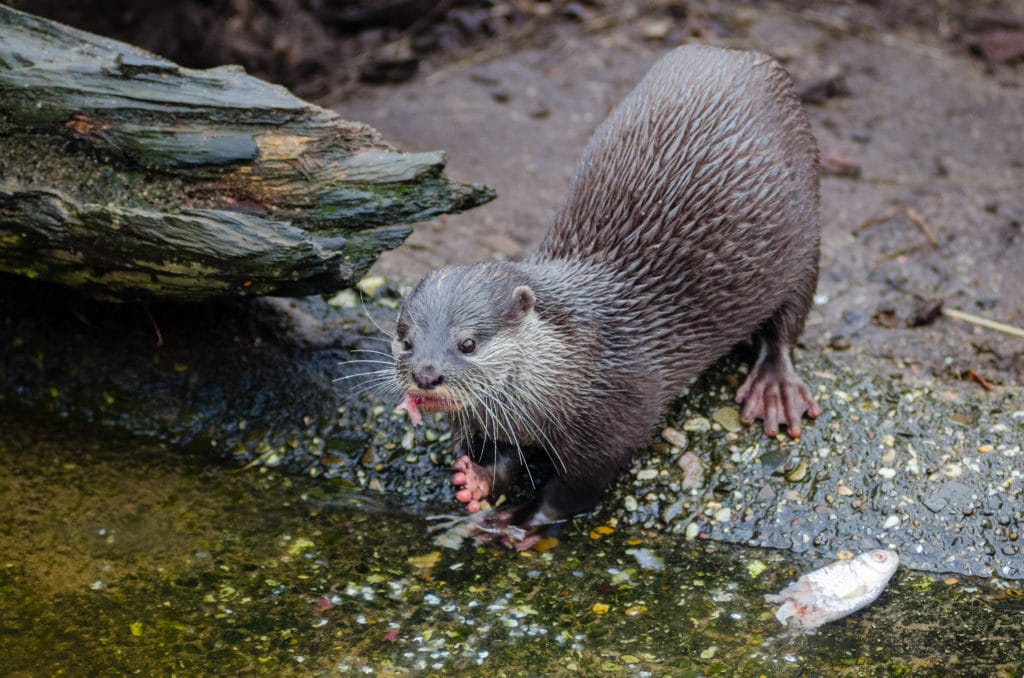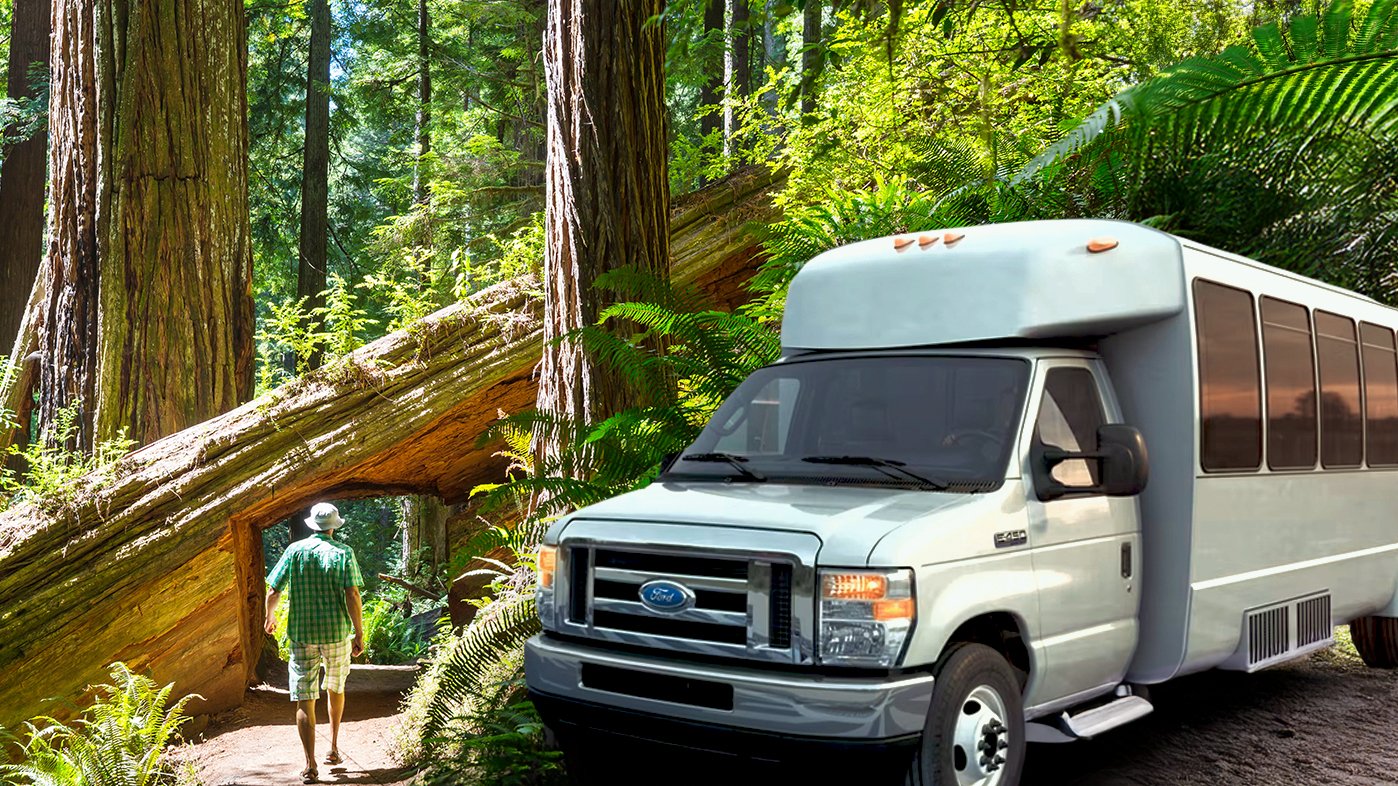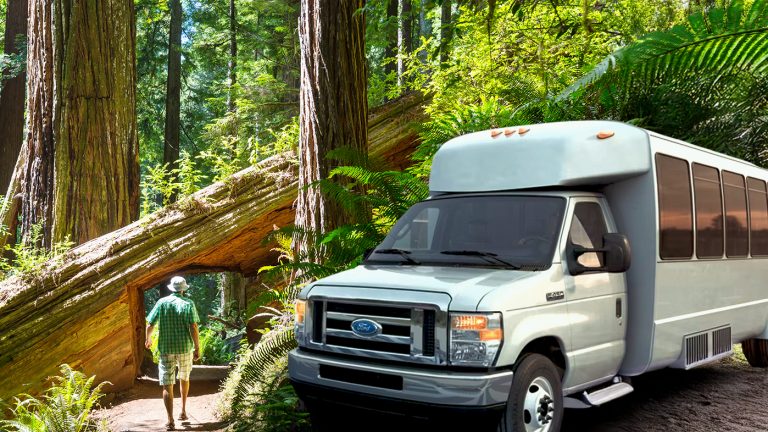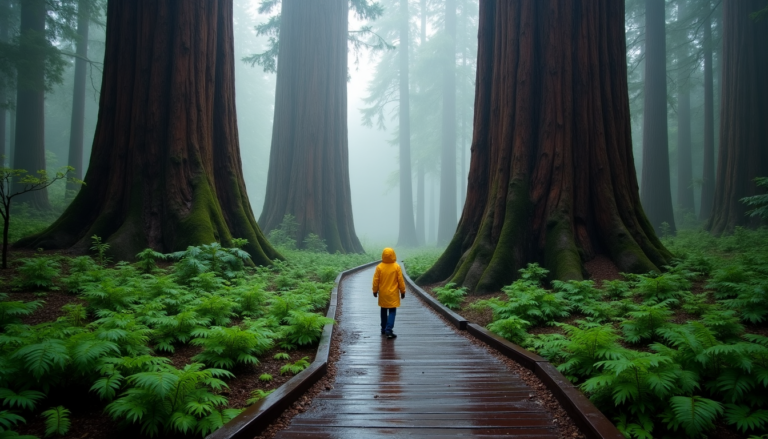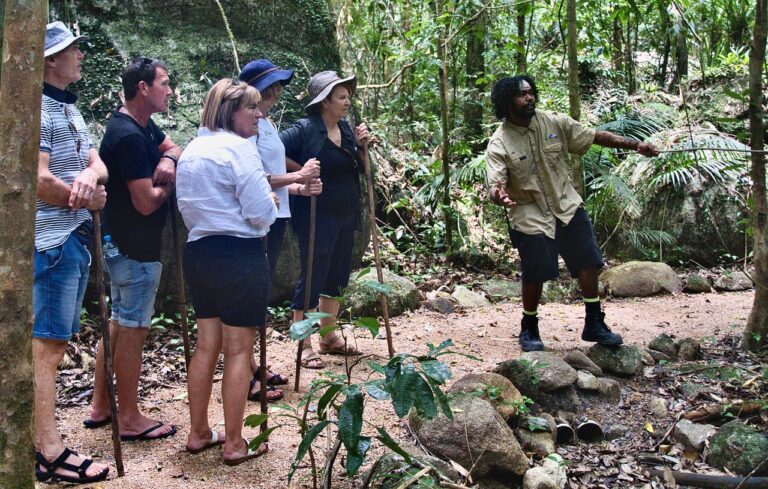Nestled in the heart of California’s coastal redwood forests, Muir Woods offers a captivating glimpse into a world of natural wonders. This ancient grove, home to towering trees and diverse wildlife, draws visitors from across the globe to experience its unique ecosystem. The nature in Muir Woods provides a sanctuary for an array of fascinating creatures, from elusive mammals to vibrant birds and aquatic life.
To explore the rich fauna of this remarkable place, our guide delves into the various habitats within Muir Woods. We’ll uncover the animals in Muir Woods that roam the forest floor, soar through the canopy, and inhabit the waters of Redwood Creek. Whether you’re planning to join wildlife tours in Muir Woods or simply want to learn more about this incredible ecosystem, this comprehensive look at Muir Woods fauna will enhance your understanding and appreciation of this natural treasure.
Mammals of Muir Woods
The diverse ecosystem of Muir Woods provides a habitat for a variety of mammals, from small rodents to larger herbivores and elusive predators. This section explores the fascinating world of mammals that call this ancient redwood forest home.
Deer and Small Rodents
Black-tailed deer, a subspecies of mule deer, are a common sight in Muir Woods. These graceful creatures, characterized by their large ears and distinctive black tails, play a crucial role in maintaining the forest’s biodiversity. As herbivores, they forage on a wide variety of plants in the understory, helping to keep the balance of vegetation in check. Visitors have a good chance to spot these animals throughout most of the year, especially on warm days when they seek refuge under the cool canopy of the redwoods.
Another important mammal in the ecosystem is the Sonoma chipmunk. These small, striped rodents inhabit the forest understory and have a varied diet that includes nuts, insects, mushrooms, and occasionally birds’ eggs. Chipmunks have a significant impact on the forest’s health by dispersing seeds and fungal spores as they move about. Their habit of storing food for winter often results in uneaten seeds sprouting into new plants, contributing to the forest’s regeneration.
Bats and Their Importance
Muir Woods is home to an impressive diversity of bat species, with ten different types observed in the area. This represents nearly two-thirds of the bat species found in the central coast of California, highlighting the importance of this protected habitat for these often misunderstood creatures.
Bats in Muir Woods find refuge in the cavities of giant redwood trees, using these spaces for daytime sleeping, nighttime resting between foraging trips, and as maternity roosts. Species such as the big brown bat, California myotis, and Townsend’s big-eared bat are among those that call this forest home.
These nocturnal mammals have a crucial role in the ecosystem. They help to control insect populations, acting as natural pest controllers. Some species are also important pollinators and seed dispersers, contributing to the health and diversity of the forest. Unfortunately, bat populations are declining worldwide due to habitat loss, pesticide use, and human disturbance. The protected status of Muir Woods provides a vital sanctuary for these ecologically important animals.
Elusive Predators
While less frequently seen, Muir Woods is also home to several predator species. Coyotes, though rarely encountered by visitors, are present in the area. These adaptable canines play a vital role in controlling populations of smaller mammals.
Another elusive predator that may inhabit the region is the mountain lion, also known as the cougar. Although sightings are extremely rare, these large cats have historically been part of the ecosystem. Their presence, or lack thereof, can have significant impacts on the populations of deer and other prey species.
The presence of these predators, along with smaller carnivores like bobcats, helps to maintain the delicate balance of the forest ecosystem. They keep herbivore populations in check, which in turn affects the vegetation and overall biodiversity of Muir Woods.
It’s important for visitors to remember that while the opportunity to view these animals in their natural habitat can be exciting, maintaining a safe distance is crucial for both human and animal safety. The wildlife in Muir Woods is truly wild, and respecting their space ensures the preservation of this unique ecosystem for future generations to enjoy.
Birds in the Redwood Canopy
The towering redwoods of Muir Woods provide a unique habitat for a diverse array of bird species. From the forest floor to the highest branches, these ancient trees offer shelter, nesting sites, and food sources for both resident and migratory birds. Let’s explore the feathered inhabitants of this remarkable ecosystem.
Common Bird Species
Muir Woods is home to at least 69 bird species, many of which are small neotropical migrants. Visitors have a good chance to spot some of the more common species during their wildlife tours in Muir Woods. The Pacific-slope flycatcher, with its distinctive “pseet-pseet” call, can often be heard flitting through the understory. The tiny Winter Wren, known for its loud and complex song, is another frequent sight in the lower branches and forest floor.
Among the canopy dwellers, the Golden-crowned Kinglet stands out with its vibrant yellow crown stripe. This diminutive bird is often seen foraging for insects high in the redwoods. The Chestnut-backed Chickadee, a year-round resident, is easily recognizable by its distinctive call and acrobatic feeding behavior.
Larger birds also make their presence known in Muir Woods. The clever Common Raven can often be seen soaring above the canopy or heard making its deep, croaking calls. The striking Steller’s Jay, with its bright blue plumage and black crest, is a frequent visitor to the forest floor and lower branches.
Rare and Endangered Birds
While Muir Woods fauna includes many common species, it also provides a sanctuary for some rare and endangered birds. The Northern Spotted Owl, a federally threatened species, finds refuge in the old-growth forests of Marin County, including Muir Woods. These small owls have become a symbol of conservation efforts in the Pacific Northwest.
Marin County is home to a significant population of Northern Spotted Owls, making Muir Woods an important habitat for this species. These owls rely on the complex structure of old-growth forests for nesting and hunting, highlighting the importance of preserving these ancient ecosystems.
Another bird of interest is the Marbled Murrelet, a threatened seabird that nests in old-growth forests. While there have been no confirmed sightings in Muir Woods, the presence of suitable habitat makes it a potential nesting site for this elusive species.
Best Birdwatching Spots
For those eager to observe the birds in Muir Woods, there are several prime locations to explore. The main trail along Redwood Creek offers excellent opportunities to spot birds foraging in the understory and lower canopy. The Hillside Trail provides a different perspective, allowing visitors to observe birds at eye level in the mid-canopy.
To maximize your chances of spotting birds, it’s best to visit during the early morning or late afternoon when many woodland birds are most active. Remember that many birds in Muir Woods spend their time high in the dense canopy, often invisible to the naked eye. Patience and a keen ear are key to successful birdwatching in this environment.
For a more comprehensive birdwatching experience, consider exploring nearby areas such as the Marin Headlands or Richardson Bay. These locations offer different habitats and can significantly increase the variety of species you might encounter during your visit to the region.
When birdwatching in Muir Woods, it’s important to remember that silence is golden. Many birds are sensitive to noise and disturbance, so maintaining a quiet presence will increase your chances of observing these fascinating creatures in their natural habitat. By respecting the animals in Muir Woods and their environment, we can ensure that this remarkable ecosystem continues to thrive for generations to come.
Aquatic Life in Redwood Creek
Redwood Creek, flowing through the heart of Muir Woods, is a vital ecosystem teeming with diverse aquatic life. This pristine waterway provides a crucial habitat for various species, from fish to amphibians, each playing a significant role in the delicate balance of nature in Muir Woods.
Salmon Species
Two remarkable salmon species call Redwood Creek home: the Coho (or Silver) salmon and the Steelhead salmon. These magnificent fish have an impact on the Muir Woods fauna and are a highlight for many wildlife tours in Muir Woods. Adult Coho salmon can typically be seen in the creek from December to January, while Steelhead follow soon after, appearing from late January to early March.
The life cycle of these salmon is truly fascinating. Coho salmon begin and end their lives in Redwood Creek, while Steelhead make the arduous journey up the creek to spawn, then race back to the sea, hoping to return the following year. This annual spectacle draws visitors from far and wide, eager to witness the determination and resilience of these remarkable creatures.
Conservation efforts have a significant impact on the salmon population in Muir Woods. Biologists conduct regular fish surveys to monitor crucial periods in the salmon life cycle, including juvenile, smolt, and adult stages. These surveys provide valuable data on both population and individual levels, helping to inform conservation strategies.
Amphibians and Reptiles
Redwood Creek’s ecosystem extends beyond fish, providing a haven for various amphibians and reptiles. These creatures have a crucial role in maintaining the delicate balance of the creek’s ecosystem and are excellent indicators of environmental health.
One of the most notable amphibians in the area is the California red-legged frog, a federally threatened species. These frogs, the largest native to western America, favor a combination of aquatic habitats for breeding and terrestrial areas with dense vegetation for shelter. They have a varied diet, mostly consisting of invertebrates.
Another fascinating amphibian found in Muir Woods is the California giant salamander. This unique endemic species has specific habitat requirements, thriving in the cool, rocky streams of damp coastal redwood forests. Growing to an impressive 6-12 inches in length, these salamanders are a sight to behold for lucky hikers exploring near the creeks.
The Western pond turtle, California’s only native freshwater turtle species, also inhabits the creek. However, this species faces challenges from introduced red-eared sliders, highlighting the delicate balance of the ecosystem and the impact of human intervention.
Creek Ecosystem
Redwood Creek’s ecosystem is a complex web of interdependent species and habitats. The creek, with its clear waters and varied terrain, provides essential resources for a diverse array of wildlife. From the forest floor to the highest branches of the towering redwoods, the creek influences and sustains life throughout Muir Woods.
The creek’s health has a direct impact on the surrounding forest. Salmon carcasses, for instance, deliver valuable marine-derived nutrients to the forest ecosystem, increasing species diversity and promoting tree growth. This nutrient cycle demonstrates the interconnectedness of aquatic and terrestrial environments in Muir Woods.
Human activity has had both positive and negative effects on the creek ecosystem. Conservation efforts, such as the Redwood Creek Salmon Habitat Enhancement Project, aim to repair damage and recover vital habitat for endangered species. These initiatives involve removing man-made structures that have altered the creek’s natural flow, allowing the water to create a more meandering pattern and deeper pools essential for young fish survival.
The delicate balance of Redwood Creek’s ecosystem serves as a reminder of the importance of conservation efforts in preserving the unique nature in Muir Woods. By protecting and restoring this vital waterway, we ensure that future generations can continue to marvel at the diverse and fascinating aquatic life that calls Muir Woods home.
Conclusion
Muir Woods stands as a testament to the incredible diversity of wildlife that thrives within its ancient redwood ecosystem. From the elusive mammals roaming the forest floor to the vibrant birds soaring through the canopy, and the fascinating aquatic life in Redwood Creek, this protected area has an influence on a wide array of species. The delicate balance of nature in Muir Woods highlights the importance of conservation efforts to preserve this unique habitat for future generations to explore and appreciate.
The wildlife of Muir Woods offers visitors a chance to witness the wonders of nature up close. Whether joining wildlife tours or exploring independently, the opportunity to observe these diverse creatures in their natural habitat provides a deeper understanding of the complex relationships within ecosystems. To wrap up, Muir Woods remains a vital sanctuary for countless species, serving as a reminder of the beauty and fragility of our natural world and the need to protect such irreplaceable environments.


